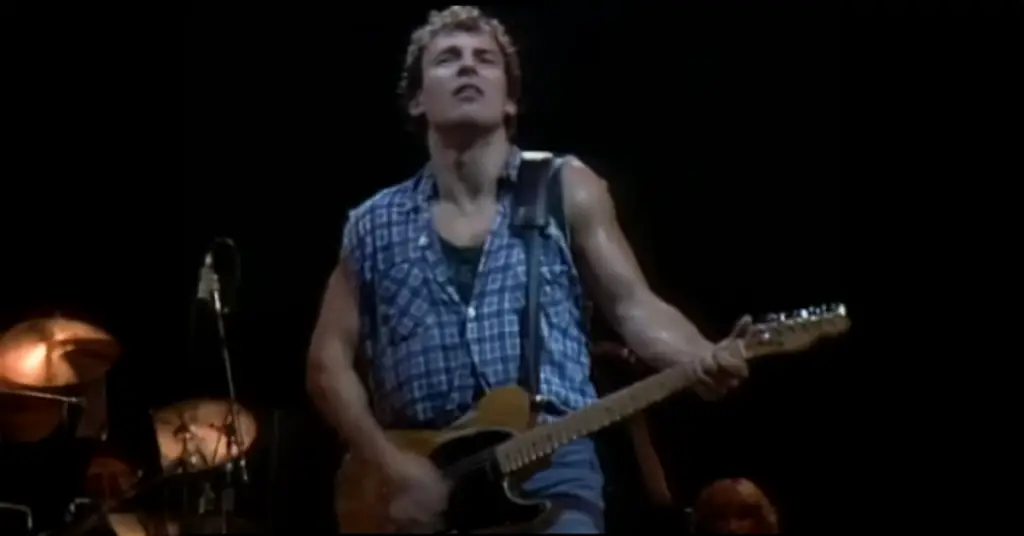Bruce Springsteen – “Born to Run”: A Rock ’n’ Roll Escape Plan with a Full Tank of Dreams
In 1975, Bruce Springsteen released “Born to Run,” a song that didn’t just make him a star — it declared him as the voice of restless youth, chasing freedom at highway speed. Packed with urgency, romance, desperation, and a cinematic sweep that few rock songs ever achieve, “Born to Run” was Springsteen’s do-or-die statement. And it worked.
Part love song, part spiritual plea, part open-road manifesto, “Born to Run” is not just one of Springsteen’s most iconic tracks — it’s one of the greatest rock songs ever written.
The Sound: Phil Spector Meets Asbury Park
“Born to Run” sounds like a wall of thunder, drawing inspiration from Phil Spector’s “Wall of Sound” production style and fusing it with the raw edge of Jersey Shore bar-band rock.
What makes it sonically remarkable:
- Massive production, with layers of guitars, pianos, glockenspiels, saxophones, and background vocals
- Clarence Clemons’ legendary sax solo, which adds soul and grandeur
- Max Weinberg’s pounding drums, driving the track with cinematic intensity
- Roy Bittan’s piano and Danny Federici’s organ, giving the song a gospel-meets-rock texture
- Springsteen’s vocals, half shouting, half praying, fully committed
It’s dense and soaring, carefully orchestrated but bursting with reckless passion.
The Lyrics: Escape, Love, and the American Dream
“In the day we sweat it out on the streets of a runaway American dream…”
From its opening line, “Born to Run” is pure poetry. Springsteen tells the story of two lovers — the narrator and Wendy — plotting their escape from a dead-end town, dreaming of something bigger, louder, and freer.
It’s about:
- Youthful desperation and yearning for something more
- The romanticism of cars, highways, and escape
- The limits of the American Dream and the hunger to break through them
- Love as both salvation and risk
“Together, Wendy, we can live with the sadness / I’ll love you with all the madness in my soul.”
Every line drips with cinematic longing, balancing hope and heartbreak. It’s Springsteen at his most idealistic and intense — where freedom isn’t guaranteed, but the chase is worth everything.
The Creation: Make or Break
By 1974, Bruce Springsteen had released two critically acclaimed but commercially underwhelming albums. With Born to Run, he poured everything into this song, writing and rewriting lyrics, obsessing over the production, and working tirelessly to get every note right.
It took months to record, and nearly 60 individual takes of the title track. Springsteen later said making the song was so intense, he thought it might be the end of his career — or the beginning.
Luckily, it was the beginning.
Reception and Impact
“Born to Run” was a sensation:
- Released as a single in August 1975, it became Springsteen’s first Top 40 hit
- Peaked at #23 on the Billboard Hot 100, but its cultural impact far outweighed its chart position
- Helped Born to Run album break into the mainstream, earning massive critical acclaim
- Landed Springsteen on the covers of Time and Newsweek in the same week — an unprecedented moment for a rock artist
Over the years, it has been recognized as:
- One of Rolling Stone’s 500 Greatest Songs of All Time
- A staple of Springsteen’s live shows, often played with thunderous fan energy
- A song that defined the sound of American rock in the 1970s and beyond
Legacy: The Anthem That Never Ages
“Born to Run” has endured because it speaks to something timeless: the desire to break free, to live fully, to risk it all for love and meaning. Whether you hear it as a nostalgic throwback or a present-tense pulse, it still hits with the urgency of a first kiss or a final goodbye.
For Bruce Springsteen, it was the song that launched his legend — and it still anchors his career to this day.
“Born to Run” isn’t just a rock anthem.
It’s a road map out of nowhere, a symphony of dreams, and a prayer set to power chords.
Final Thoughts
Few songs capture the essence of youth, longing, and rock ’n’ roll freedom like “Born to Run.” It’s grand without being bloated, romantic without being corny, and loud in all the right ways.
More than 40 years later, the song still makes hearts race and windows roll down. Because deep down, we’re all still trying to get out while we’re young — chasing something better just beyond the horizon.



Facebook Comments